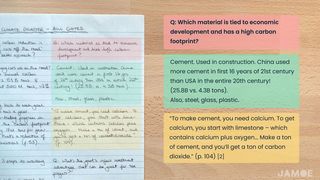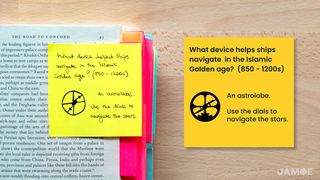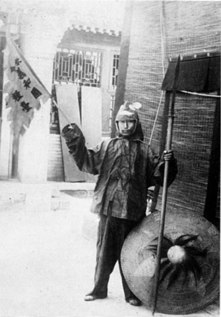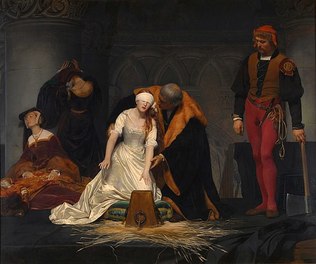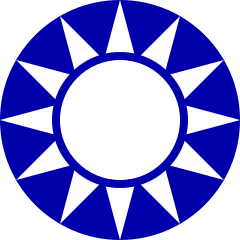Edited, memorised or added to reading queue
on 27-Sep-2022 (Tue)
Do you want BuboFlash to help you learning these things? Click here to log in or create user.
| status | not read | reprioritisations | ||
|---|---|---|---|---|
| last reprioritisation on | suggested re-reading day | |||
| started reading on | finished reading on |
| status | not read | reprioritisations | ||
|---|---|---|---|---|
| last reprioritisation on | suggested re-reading day | |||
| started reading on | finished reading on |
| status | not read | reprioritisations | ||
|---|---|---|---|---|
| last reprioritisation on | suggested re-reading day | |||
| started reading on | finished reading on |
Unknown title
onate Poems Find and share the perfect poems. search find poems find poets poem-a-day library (texts, books & more) materials for teachers poetry near you The Niagara River Kay Ryan - 1945- <span>As though the river were a floor, we position our table and chairs upon it, eat, and have conversation. As it moves along, we notice—as calmly as though dining room paintings were being replaced— the changing scenes along the shore. We do know, we do know this is the Niagara River, but it is hard to remember what that means. From The Niagara River by Kay Ryan, published by Grove Press. Copyright © 2005 by Kay Ryan. Used by permission. All rights reserved. The author of several collections of poetry, Kay Rya
| status | not read | reprioritisations | ||
|---|---|---|---|---|
| last reprioritisation on | suggested re-reading day | |||
| started reading on | finished reading on |
A Practical Guide To Learning Anything Faster With The Feynman Technique
concepts, and learn how to rework and replace it with everyday language that will improve your long-term memory. Improve your ability to copy and paste ideas from your mind to somebody else's. <span>What is the Feynman Technique? The inventor of the Feynman technique, Richard Feynman, was a Nobel Prize winning Physicist who was described as "the greatest teacher I never had" by Bill Gates. Part of his genius lay in his four step technique for learning and teaching, which he applied to everything from quantum electrodynamics to playing the bongos: 1. Choose a concept or topic you want to learn 2. Explain everything you know about the concept to your 12-year-old self 3. Return to the source material to close any knowledge gaps 4. Continue to simplify your explanation until its meaning is obvious Applying the Feynman Technique I'll be applying this technique to written explanations, but talking through your explanations to yourself is just as effective. We recommend alternating
| status | not read | reprioritisations | ||
|---|---|---|---|---|
| last reprioritisation on | suggested re-reading day | |||
| started reading on | finished reading on |
A Practical Guide To Learning Anything Faster With The Feynman Technique
terest rate', 'positive return'. However, sounding clever is not the goal. Being clear for the benefit of my 12-year-old self is the goal, so this will be the focus of the revised explanations. <span>If my 12-year-old self understands it, present-day me will understand it. The mechanics are unclear: The jargon makes it difficult to see if I truly understand the mechanics of how most banks make their money. By stripping back the jargon, I'll be forced to explain these mechanics, which will root this knowledge firmly in my memory. Attempt 2: Stronger Explanation When you put money into a bank, they often pay you for doing so. The payment comes in the form of interest, which is a percentage of the amount you've given the bank. For example, if you gave the bank £100 and they were paying a 10% interest rate per year, you would have £110 after 12 months – your original £100 plus the £10 interest payment. The main way banks make money is by lending people money to buy things like houses, or to start businesses. When you borrow money from a bank, the bank charges you. For example, say you borrowed £100, the bank may charge you 15% per year. That means if you pay back the loan after 12 months, you will owe the bank £115 – the original £100 plus £15. Where does a bank get the money to make so many loans? From you. The bank lends out your money. In the example given, they would pay you a 10% interest rate but charge borrowers a 15% interest rate. The bank's profit is the difference between the amount it pays you, and the amount it charges, which is 5%: 15% minus 10%. That's why if everyone withdrew their money at the same time, it is a deadly problem for a bank, because they don't have your money. They've lent it to someone else to try and make a profit. That's why banks pay you for saving your money with them, so you won't want to withdraw it. Analysis Mechanics are crystal clear: All jargon has been stripped back, and the relationship between people borrowing and saving money has been made explicit by explaining every step i
| status | not read | reprioritisations | ||
|---|---|---|---|---|
| last reprioritisation on | suggested re-reading day | |||
| started reading on | finished reading on |
Take Better Notes When Reading Non-Fiction With HQ&A
ary to recall later. Foundations: Deconstructing the HQ&A note example from earlier When reading, each component of the HQ&A note serves to improve your memory, focus and understanding: <span>Highlight = The original context for your reference. Question = An application of the new information to form an insight. Answer = A compressed version of the highlight's insight expressed in your own words. Unpacking the thought process behind the HQ&A note, we took when reading The Silk Road: Foundations: How to review your HQ&A Notes Don't read the highlight first: Read your question first: as you would a flashcard, quiz yourself. By reading the question first, you’ll r
| status | not read | reprioritisations | ||
|---|---|---|---|---|
| last reprioritisation on | suggested re-reading day | |||
| started reading on | finished reading on |
Get More Value and Joy from Books with Handwritten HQ&A Notes (Pt 2)
eading. The bonus is that every note represents your own thoughts on the author's ideas, and you'll be able to steer clear of the pitfall of copying rather than comprehending what the author is <span>saying. A note taken on the hidden and unaccounted for carbon-cost of construction. Materials like cement, glass, plastic, and steel are cheap because their price doesn’t include the cost of the carbon they produce[2]. The challenge is to find a way to allow everyone to build thriving communities while removing carbon from the equation. The book goes on to show how. Balancing joy and effort when taking notes Taking notes when reading can ruin your flow. Sometimes you just want to get through a text or be carried away by the author's lyrical prose.
| status | not read | reprioritisations | ||
|---|---|---|---|---|
| last reprioritisation on | suggested re-reading day | |||
| started reading on | finished reading on |
Get More Value and Joy from Books with Handwritten HQ&A Notes (Pt 2)
n using the HQ&A technique. We've left this for last, as you don't need to use Post-It Notes to get value from the HQ&A technique, but you may want to consider using them at some point. <span>By writing our HQ&A Notes on Post-Its and then placing them on the relevant pages, we end up with a book that's full of shortcuts to the main ideas and insights we care about. As Post-Its are small, they force us to focus our notes on what's important. Then we need to compose the note thoughtfully to ensure that the compressed idea still makes sense. That includes potentially peppering in a few helpful diagrams. An example of a Post-It HQ&A note from The Silk Roads. We always include the time period for historical notes, as it serves as an anchor for the memory, allowing us to place it amon
| status | not read | reprioritisations | ||
|---|---|---|---|---|
| last reprioritisation on | suggested re-reading day | |||
| started reading on | finished reading on |
Boxer Rebellion - Wikipedia
Chinese 義和團運動 Simplified Chinese 义和团运动 Literal meaning Militia United in Righteousness Movement showTranscriptions Standard Mandarin Hanyu Pinyin Yìhétuán Yùndòng Wade–Giles I-ho-t'uan Yün-tung <span>The Boxer Rebellion, also known as the Boxer Uprising, the Boxer Insurrection, or the Yihetuan Movement, was an anti-foreign, anti-colonial, and anti-Christian uprising in China between 1899 and 1901, towards the end of the Qing dynasty, by the Society of Righteous and Harmonious Fists (Yìhéquán), known as the "Boxers" in English because many of its members had practised Chinese martial arts, which at the time were referred to as "Chinese boxing". After the Sino-Japanese War of 1895, villagers in North China feared the expansion of foreign spheres of influence and resented the extension of privileges to Christian missionaries, who used them to shield their followers. In 1898 Northern China experienced several natural disasters, including the Yellow River flooding and droughts, which Boxers blamed on foreign and Christian influence. Beginning in 1899, Boxers spread violence across Shandong and the North China Plain, destroying foreign property such as railroads and attacking or murdering Christian missionaries and Chinese Christians. The events came to a head in June 1900 when Boxer fighters, convinced they were invulnerable to foreign weapons, converged on Beijing with the slogan "Support the Qing government and exterminate the foreigners." Diplomats, missionaries, soldiers and some Chinese Christians took refuge in the diplomatic Legation Quarter. An Eight Nation Alliance of American, Austro-Hungarian, British, French, Ge
| status | not read | reprioritisations | ||
|---|---|---|---|---|
| last reprioritisation on | suggested re-reading day | |||
| started reading on | finished reading on |
| status | not read | reprioritisations | ||
|---|---|---|---|---|
| last reprioritisation on | suggested re-reading day | |||
| started reading on | finished reading on |
Lady Jane Grey - Wikipedia
eter ad Vincula, Tower of London Spouse Lord Guildford Dudley (m. 1553; d. 1554) House Grey Father Henry Grey, 1st Duke of Suffolk Mother Lady Frances Brandon Religion Protestant Signature <span>Lady Jane Grey (c. 1537 – 12 February 1554), later known as Lady Jane Dudley (after her marriage)[4] and as the "Nine Days' Queen",[7] was an English noblewoman who claimed the throne of England and Ireland from 10 July until 19 July 1553. Jane was the great-granddaughter of Henry VII through his younger daughter Mary, and was a first cousin once removed of Edward VI. She had an excellent humanist education, and a reputation as one of the most learned young women of her day.[8] In May 1553, she married Lord Guildford Dudley, a younger son of Edward's chief minister John Dudley, Duke of Northumberland. In June 1553, Edward VI wrote his will, nominating Jane and her male heirs as successors to the Crown, in part because his half-sister Mary was Catholic, while Jane was a committed Protestant and would support the reformed Church of England, whose foundation Edward laid. The will removed his half-sisters, Mary and Elizabeth, from the line of succession on account of their illegitimacy, subverting their claims under the Third Succession Act. After Edward's death, Jane was proclaimed queen on 10 July 1553, and awaited coronation in the Tower of London. Support for Mary grew quickly, and most of Jane's supporters abandoned her. The Privy Council of England suddenly changed sides, and proclaimed Mary as queen on 19 July 1553, deposing Jane. Her primary supporter, her father-in-law, the Duke of Northumberland, was accused of treason, and executed less than a month later. Jane was held prisoner in the Tower, and was convicted of high treason in November 1553, which carried a sentence of death. Mary initially spared her life; however, Jane soon became viewed as a threat to the Crown when her father, Henry Grey, 1st Duke of Suffolk, became involved with Wyatt's rebellion against Queen Mary's intention to marry Philip II of Spain. Jane and her husband were executed on 12 February 1554.[5] Contents 1 Early life and education 2 Contracts for marriage 3 Claim to the throne and accession 4 Trial and execution 5 Legacy 6 Family tree 7 References 8 Bibliography 9 External link
| status | not read | reprioritisations | ||
|---|---|---|---|---|
| last reprioritisation on | suggested re-reading day | |||
| started reading on | finished reading on |
Franco-Prussian War - Wikipedia
eval Vendôme Pesmes Longeau Epuisay Nuits Saint Georges Tours Hallue Péronne Bapaume Rocroi Villersexel Le Mans Lisaine Longwy St. Quentin 2nd Buzenval Pontarlier Belgian reaction Paris Commune <span>The Franco-Prussian War or Franco-German War,[a] often referred to in France as the War of 1870, was a conflict between the Second French Empire and the North German Confederation led by the Kingdom of Prussia. Lasting from 19 July 1870 to 28 January 1871, the conflict was caused primarily by France's determination to reassert its dominant position in continental Europe, which appeared in question following the decisive Prussian victory over Austria in 1866.[12] According to some historians, Prussian chancellor Otto von Bismarck deliberately provoked the French into declaring war on Prussia in order to induce four independent southern German states—Baden, Württemberg, Bavaria and Hesse-Darmstadt—to join the North German Confederation; other historians contend that Bismarck exploited the circumstances as they unfolded. All agree that Bismarck recognized the potential for new German alliances, given the situation as a whole.[13] France mobilised its army on 15 July 1870, leading the North German Confederation to respond with its own mobilisation later that day. On 16 July 1870, the French parliament voted to declare war on Prussia; France invaded German territory on 2 August. The German coalition mobilised its troops much more effectively than the French and invaded northeastern France on 4 August. German forces were superior in numbers, training, and leadership and made more effective use of modern technology, particularly railways and artillery. A series of swift Prussian and German victories in eastern France, culminating in the Siege of Metz and the Battle of Sedan, resulted in the capture of the French Emperor Napoleon III and the decisive defeat of the army of the Second Empire; a Government of National Defense was formed in Paris on 4 September and continued the war for another five months. German forces fought and defeated new French armies in northern France, then besieged Paris for over four months before it fell on 28 January 1871, effectively ending the war. In the waning days of the war, with German victory all but assured, the German states proclaimed their union as the German Empire under the Prussian king Wilhelm I and Chancellor Bismarck. With the notable exception of Austria, the vast majority of Germans were united under a nation-state for the first time. Following an armistice with France, the Treaty of Frankfurt was signed on 10 May 1871, giving Germany billions of francs in war indemnity, as well as most of Alsace and parts of Lorraine, which became the Imperial Territory of Alsace-Lorraine (Reichsland Elsaß-Lothringen). The war had a lasting impact on Europe. By hastening German unification, the war significantly altered the balance of power on the continent; with the new German nation state supplanting France as the dominant European land power. Bismarck maintained great authority in international affairs for two decades, developing a reputation for adept and pragmatic diplomacy that raised Germany's global stature and influence. In France, it brought a final end to imperial rule and began the first lasting republican government. Resentment over France's defeat triggered the Paris Commune, a revolutionary uprising which seized and held power for two months before its bloody suppression; the event would influence the politics and policies of the Third Republic. Contents 1 Causes 2 Opposing forces 2.1 French 2.2 Prussians/Germans 3 French Army incursion 3.1 Preparations for the offensive 3.2 Occupation of Saarbrücken 4 Prussian Army advance 4.1
| status | not read | reprioritisations | ||
|---|---|---|---|---|
| last reprioritisation on | suggested re-reading day | |||
| started reading on | finished reading on |
Belgium and the Franco-Prussian War - Wikipedia
pedia Jump to navigation Jump to search French troops approaching a small detachment of Belgian soldiers to seek internment in the aftermath of a nearby defeat, probably at the Battle of Sedan. <span>Belgium was not a belligerent in the Franco-Prussian War (1870–1871), as the country was neutral throughout the war, but was heavily influenced by the social and political effects of the conflict. An invasion of Belgian territory by either side was widely feared in 1870 and the Belgian Army was mobilised. The inadequacies which this revealed in Belgium's military and defensive preparations led to calls to reform the system of conscription and for a programme of fortification-building which would greatly influence the early phases of World War I. Contents 1 Belgium and the Crisis of 1870 2 Legacy 3 See also 4 References 5 Further reading Belgium and the Crisis of 1870[edit] King Leopold II, shown in military uniform The Treaty o
| status | not read | reprioritisations | ||
|---|---|---|---|---|
| last reprioritisation on | suggested re-reading day | |||
| started reading on | finished reading on |
Belgium and the Franco-Prussian War - Wikipedia
intervention of the Treaty's signatory powers. However, there were doubts that the Treaty would be honoured if Belgium was attacked especially in the aftermath of the Luxembourg Crisis of 1867. <span>The outbreak of the Franco-Prussian War led King Leopold II and the government of Jules d'Anethan, installed only two weeks before the war's outbreak, to fear that Belgium would be invaded. A career staff officer, Major General Guillaume, was appointed as a non-partisan expert Minister of War in the new cabinet.[1] The gold reserves of the National Bank were hurried to the National Redoubt at Antwerp before the news became public.[2] When this leaked out, it caused panic. The Belgian Army was called up on the 15 July, the same day that both French and German armies mobilised.[3] The Belgian troops were divided into two armies; the Army of Antwerp (15,000
| status | not read | reprioritisations | ||
|---|---|---|---|---|
| last reprioritisation on | suggested re-reading day | |||
| started reading on | finished reading on |
Kuomintang - Wikipedia
tions Taiwan independence movement Chinese Taipei Chinese unification Taiwanese nationalism Tangwai movement Taiwanization Third Taiwan Strait Crisis Taiwan portal Other countries v t e |bubo-se<span>lection-start|The Kuomintang (KMT),[I] also referred to as the Guomindang (GMD)[36] or the Chinese Nationalist Party,[1] is a major political party in the Republic of China, initially on the Chinese mainland and in Taiwan after 1949. It was the dominant party in China during the Republican Era from 1928 to 1949, when most of the Chinese mainland was under its control. The party retreated from the mainland to Taiwan on 7 December 1949, following its defeat in the Chinese Civil War. Chiang Kai-shek declared martial law and retained its authoritarian rule over Taiwan under the Dang Guo system until democratic reforms were enacted in the 1980s and full democratization in the 1990s. In Taiwanese politics, the KMT is the dominant party in the Pan-Blue Coalition and primarily competes with the rival Democratic Progressive Party (DPP). It is currently the largest opposition party in the Legislative Yuan. The current chairman is Eric Chu. The party originated as the Revive China Society, founded by Sun Yat-sen on 24 November 1894 in Honolulu, Republic of Hawaii. From there, the party underwent major reorganization changes that occurred before and after the Xinhai Revolution, which resulted in the collapse of the Qing dynasty and the establishment of the Beiyang government. In 1919, Sun Yat-sen re-established the party under the name "Kuomintang" in the Shanghai French Concession. From 1926 to 1928, the KMT under Chiang Kai-shek successfully led the Northern Expedition against regional warlords and unified the fragmented nation. From 1937 to 1945, the KMT-ruled Nationalist government led China through the Second Sino-Japanese War against Japan. By 1949, the KMT was decisively defeated by the Chinese Communist Party (CPC) in the Chinese Civil War (in which the People’s Republic of China was established by the CPC on 1 October 1949) and withdrew the ROC government to Taiwan, a former Qing territory annexed by the Empire of Japan from 1895 to 1945. From 1949 to 1987, the KMT ruled Taiwan as an authoritarian one-party state after the February 28 incident. During this period, martial law was in effect and civil liberties were curtai
Flashcard 7551336975628
| status | not learned | measured difficulty | 37% [default] | last interval [days] | |||
|---|---|---|---|---|---|---|---|
| repetition number in this series | 0 | memorised on | scheduled repetition | ||||
| scheduled repetition interval | last repetition or drill |
Flashcard 7551338810636
| status | not learned | measured difficulty | 37% [default] | last interval [days] | |||
|---|---|---|---|---|---|---|---|
| repetition number in this series | 0 | memorised on | scheduled repetition | ||||
| scheduled repetition interval | last repetition or drill |
Flashcard 7551341432076
| status | not learned | measured difficulty | 37% [default] | last interval [days] | |||
|---|---|---|---|---|---|---|---|
| repetition number in this series | 0 | memorised on | scheduled repetition | ||||
| scheduled repetition interval | last repetition or drill |

